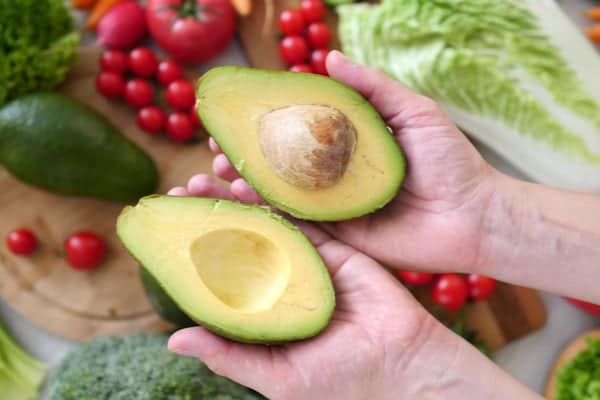Diabetes is a condition in which the body fails to respond to insulin properly.
Insulin is the hormone that regulates blood sugar levels. When blood sugar levels are high, the pancreas will make more insulin and release it so that cells are able to receive blood sugar. This is why insulin is often called the key which unlocks cells. When cells reach sugar capacity, insulin helps store the remaining sugar in the liver. When blood sugar levels drop in between meals, insulin will help release that stored sugar from the liver.
If the pancreas cannot produce enough insulin, or if cells stop responding to it, hyperglycemia or high blood sugar develops.
Type 1 diabetes means the body does not make enough, or any, insulin on its own. The beta cells within the pancreas that produce insulin are damaged or destroyed. People with type 1 diabetes rely on insulin injections or an insulin pump to ensure they maintain healthy blood sugar levels and avoid the complications of hyperglycemia.
Type 2 diabetes means that cells are not responding to insulin or are resistant to it. People with type 2 diabetes might benefit from insulin shots, but are often given oral medications and told to change their diet and exercise habits to reverse or delay the long-term effects of diabetes. Type 2 diabetes progresses with time; the longer someone has type 2 diabetes, the more likely they are insulin-dependent.
Because diabetes is now regarded as a public health concern within the U.S, more people are aware of the disease, its causes, and how to prevent it through diet and exercise. The great news is that type 2 diabetes is largely preventable and reversible through diet and exercise. As for type 1 diabetes, it is possible that environmental and controllable factors might be causing an auto-immune response in young children that results in the pancreas destruction or dysfunction. This leads to insufficient insulin production, though the exact causes are unknown. Risk factors include family history, genetics, geography (type 1 diabetes tends to increase as the distance from the equator increases), and age, with greater likelihood of occurrence between ages 4-7 and 10-14.
Nevertheless, some scientists are suspicious of uncontrollable factors that might influence the risk of type 2 diabetes, such as exposure to chemicals. A review of the literature found that there is not enough research to establish a link between chemical exposure and type 1 diabetes, but that there might be a link between chemical exposure and type 2 diabetes in conjunction with a high-carbohydrate or high-fat diet later in life.

Get Your Free Guide to Becoming a Holistic Nutritionist
Learn about the important role of holistic nutritionists, what it takes to be successful as one, and how to build a lucrative, impactful career in nutrition.
Traditionally understood and known contributors to type 2 diabetes include family history, obesity, lack of exercise, and old age. But, scientists, curious about the rapid rise in type 2 diabetes, investigated the influence that environmental chemicals have on insulin and blood sugar levels. They found that people are unknowingly chronically exposed to influential environmental chemicals because of industrial air, water, and soil pollution. These pollutants are considered to be the new risk factors for diabetes:
Arsenic
Arsenic is found in contaminated drinking water, air, oil, and other foods. Because there is no safe limit for arsenic in foods, all foods may contain unsafe amounts. Unfortunately, arsenic is difficult to avoid because of this.
Bisphenol A
Bisphenol A (BPA) is found in plastics and resins, and can be avoided by using glass or high-quality stainless steel and BPA-Free products.
Cadmium
Cadmium (Cd) is a non-degradable, toxic, heavy metal that interacts with blood glucose levels and pancreatic cells. It can cause insulin resistance.
Mercury
Mercury (Hg) is found in food and contaminated water and may augment the risk of type 2 diabetes. However, research has not found a causal relationship between mercury consumption and type 2 diabetes.
Persistent Organic Pollutants
Persistent Organic Pollutants (POPs) are organic compounds that can accumulate in animal fats. Although they are mostly banned now as a manufacturing ingredient, POPs still linger, and have a positive association with insulin resistance, though research is inconclusive on a causal relationship.
Signs and symptoms of type 2 diabetes are subtle and often go unnoticed until problems from long-term damage are uncovered. Most early symptoms are from higher-than-normal levels of glucose. Type 1 diabetes is typically diagnosed at a young age but can occur at any age.
Early signs and symptoms of diabetes include the following:
- Hunger and fatigue
- Frequent urination; urinating more often and having a greater thirst
- Dry mouth and itchy skin
- Blurred vision
Symptoms of type 2 diabetes tend to show after glucose levels have been high for a long time:
- Yeast infections
- Slow-healing sores or cuts
- Pain or numbness in feet or legs
- Unplanned or unexplained weight loss
- Nausea and vomiting
Diagnosing diabetes is not difficult. Heeding the early warning signs and being aware of symptoms can be the most difficult part. Type 1 diabetes often has a sudden onset, whereas type 2 diabetes can slowly sneak up on a person over many years. Consistent yearly check-ups to monitor glycated hemoglobin (A1C) is the best way to stay ahead of the disease.
An A1C blood test does not require fasting and is indicative of the average blood sugar level for the past two to three months. It measures the percentage of blood sugar attached to hemoglobin, the protein that carries oxygen in red blood cells.
Other tests that may be used to diagnose diabetes include a random blood sugar test, a fasting blood sugar test, and an oral glucose tolerance test.
If type 1 diabetes is suspected, a urine test can be done to look for the presence of byproducts from using muscle and fat tissues for energy, when a lack of insulin causes the body to use available glucose instead.
In the upcoming Part Two of this series, treatment options are presented. Now that you know what influences the risk of diabetes, and that type 2 diabetes is preventable and reversible, start with exercising more regularly, avoiding sugar-laden foods, and doing your best to avoid environmental pollutants.

Get Your Free Guide to Becoming a Holistic Nutritionist
Learn about the important role of holistic nutritionists, what it takes to be successful as one, and how to build a lucrative, impactful career in nutrition.



